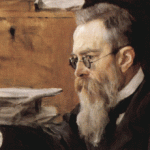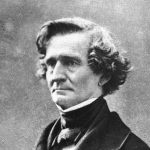Musical Journeys: Mozart’s “Posthorn” Symphony & Debussy’s Images
Though he never traveled to Spain, some of Wolfgang Mozart’s most famous operas are set there, such as Don Giovanni and The Marriage of Figaro. His symphonies, however, derive their character from other European musical sources, mainly Italy, France, and Germany. His “Posthorn” Symphony is a creation of his Salzburg years and is adapted from the longer, seven-movement, “Posthorn” Serenade, K. 320 composed in 1779. The serenade was a genre that was common to a number of Austrian composers, including Mozart and his father, Leopold, both of whom composed quite a few of these lighter, occasional works. It is believed that Wolfgang Mozart’s “Posthorn Serenade” was composed for the occasion of the conclusion of the academic year (Finalmusik) in Salzburg. The question that probably most interests listeners about either this serenade or the symphony programmed here is, what is a post horn? The answer is, in this instance, as simple as the name implies. It is a valveless brass horn used to announce the arrival and departure of the mail service and was used through the early 18th century. The instrument appears in the trio of the Minuet II of the serenade but is not included in the symphony. As is the case in a few other of his serenades, Mozart later reconfigured some of the movements of one work into another composition for new uses. The Posthorn Symphony is such a work, using three movements of the serenade to form a work structured in the Italianate manner of Mozart’s early symphonies.
The first movement begins with a brief but slow, solemn introduction, characteristic of Mozart’s later operas and symphonies, before launching into a spirited movement marked by alternately surging and charming themes mostly carried by the strings. The slow middle movement, Andantino, begins in a darkly serious mood, balanced by the subsequent lighter interplay between strings and wind instruments. The movement’s middle section emphasizes the darker music of the opening. A vigorous and playful Presto movement brings this “symphony” to a rousing and energetic conclusion.
Continuing with the theme of musical journeys, each of the three movements of Images (1912) by French composer Claude Debussy (1862-1918) is an evocation of a different cultural locale. Debussy used the title of Images for no fewer than three different compositions, but the other two are works for solo piano: Images, series 1 (1901-1905) and series 2 (1907). The third series began as a work for two pianos but ended up as an orchestrated set and has since become one of Debussy’s most beloved works, especially the longer middle movement, titled “Iberia.” In fact, Debussy found inspiration in a wide variety of foreign musical sources throughout his career. He famously first heard the exotic and beguiling sound of the Javanese Gamelan orchestra while attending the 1889 Universal Exposition in Paris. Coincidentally, Rimsky-Korsakov’s Capriccio Espagnol was performed for the first time outside of Russia at that same Paris Exposition, again to wide acclaim. Earlier in his career, Debussy had the opportunity to spend time in Russia as piano teacher and member of a piano trio where he encountered the music of the Russian nationalists as well as some of the regional folk music. For the French composer, like the Russians, folk music was a way to find a new direction away from the established traditions of European concert music. Like each of the earlier Images sets, the orchestral Images carry descriptive and evocative titles. And like Rimsky-Korsakov, Debussy borrows themes from various geographical regions to convey the character of the place. In the Images for orchestra he references three different European regions: England, Spain, and France.
The first section is titled “Gigues,” the French word for “jig,” a common type of Anglo-Irish folk dance. Debussy originally intended the movement to be called “Gigues tristes,” or mournful jigs, which seems somewhat ironic as jigs tend to be lively dances. The opening music is spectral and haunting, alluding to the original “triste” character, but soon a rhythmic dancing theme enters, it turns out borrowed from a folk song known as “The Keel Row,” of northern English origin. The movement plays brilliantly on the shifting moods represented by the haunting opening music and the rhythmically activated folk tune. The second portion of the work is the longest and most varied, titled “Iberia.” Though Debussy quotes no folk songs or dances here, the colors and themes are distinctly Spanish in their personality. The movement is organized in three sections: “Par les rues et par les Chemins” (In the Streets and Byways), bold and buoyant in character animated by castanets and evocative dancing themes; “Les parfums de la nuit” (The Fragrances of the Night) takes on the mood of an enchanted fantasy through its soaring themes, supple rhythms, and obscured pulse; and “Le matin d’un jour de fête” (The Morning of a Festival Day), which seems to approach from the distance as a march leading into an exuberant dance sequence.
The concluding section of Images is titled “Rondes de printemps” (Spring round dances) is a gloriously impressionistic depiction of French springtime. Debussy included an inscription in the score to this concluding section that reads: “Vive le Mai, bienvenu soit le Mai/Avec son gonfalon sauvage: Long live May, welcome May with its wild banner.” Within this colorful and episodic movement, Debussy suggests its French character through the use of a pair of folk songs “Nous n’irons plus au bois (We shall not return to the woods)” and “Do, do l’enfant do (Sleep, sleep, the child sleeps).” The work closes with some of Debussy’s most inspired splashes of orchestral color, a masterpiece of invention and sound.









louis vuitton damier belt
The Original Women louis Vuitton Sale|Authentic Women louis Vuitton Sale|Cheap Louis Vuitton Handbags Factory Outlet Online Sales signature in the handbag uses hot stamping film, the location of the Original Women louis Vuitton Sale|Authentic Women lou…